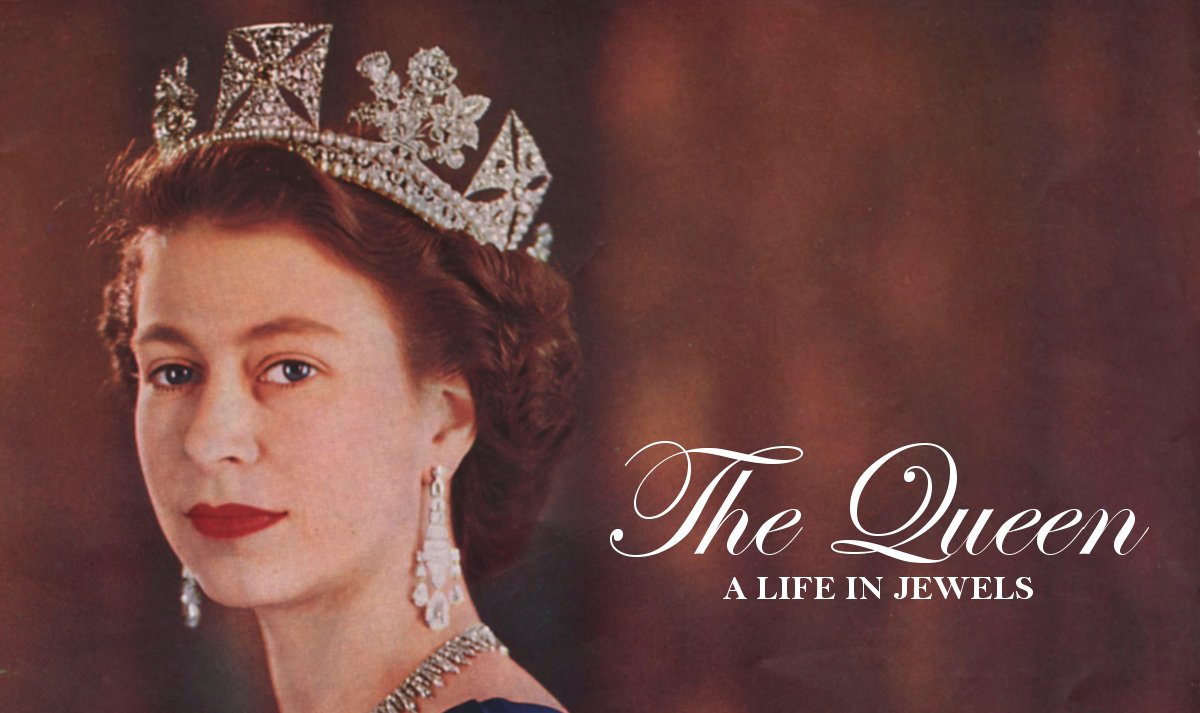
Our bejeweled tribute to the legacy of Queen Elizabeth II continues today with one of the most important days of her entire life: her royal wedding to Prince Philip, Duke of Edinburgh.
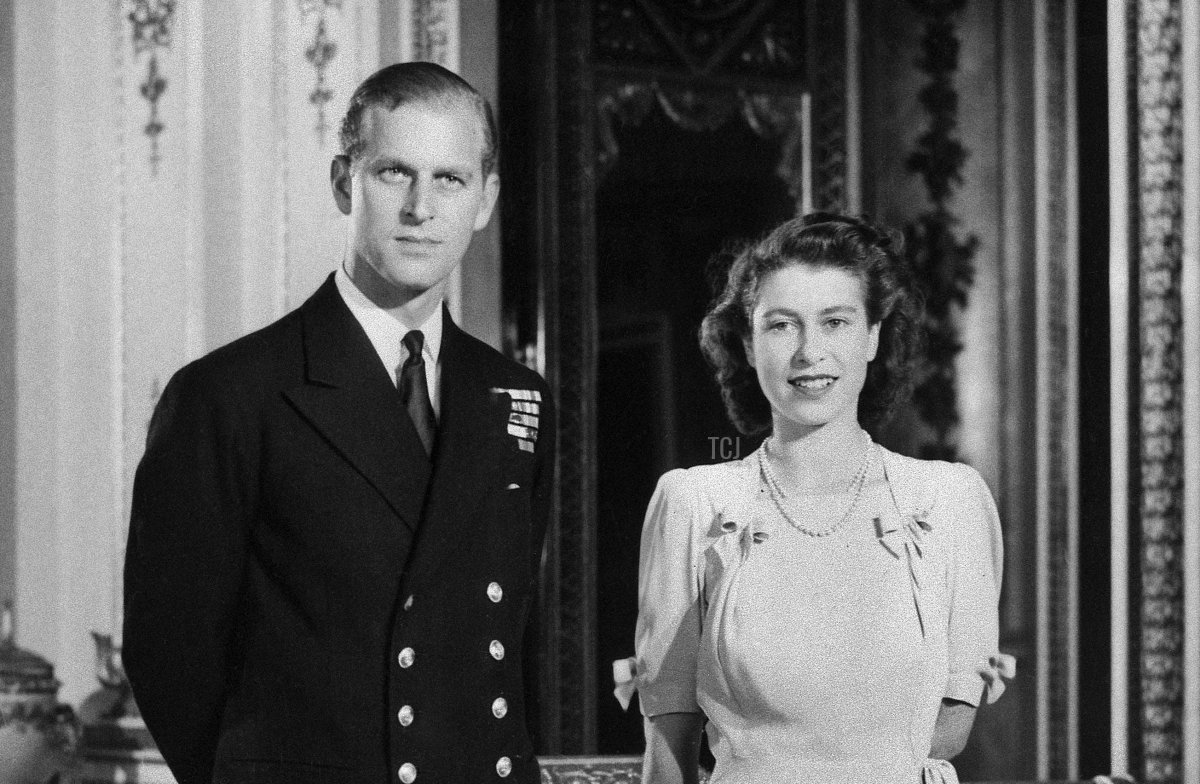
After Elizabeth and Philip’s royal engagement was officially announced in July 1947, plans were immediately set in motion to prepare for the upcoming royal wedding. The location would be Westminster Abbey, and the date was set for November 1947.
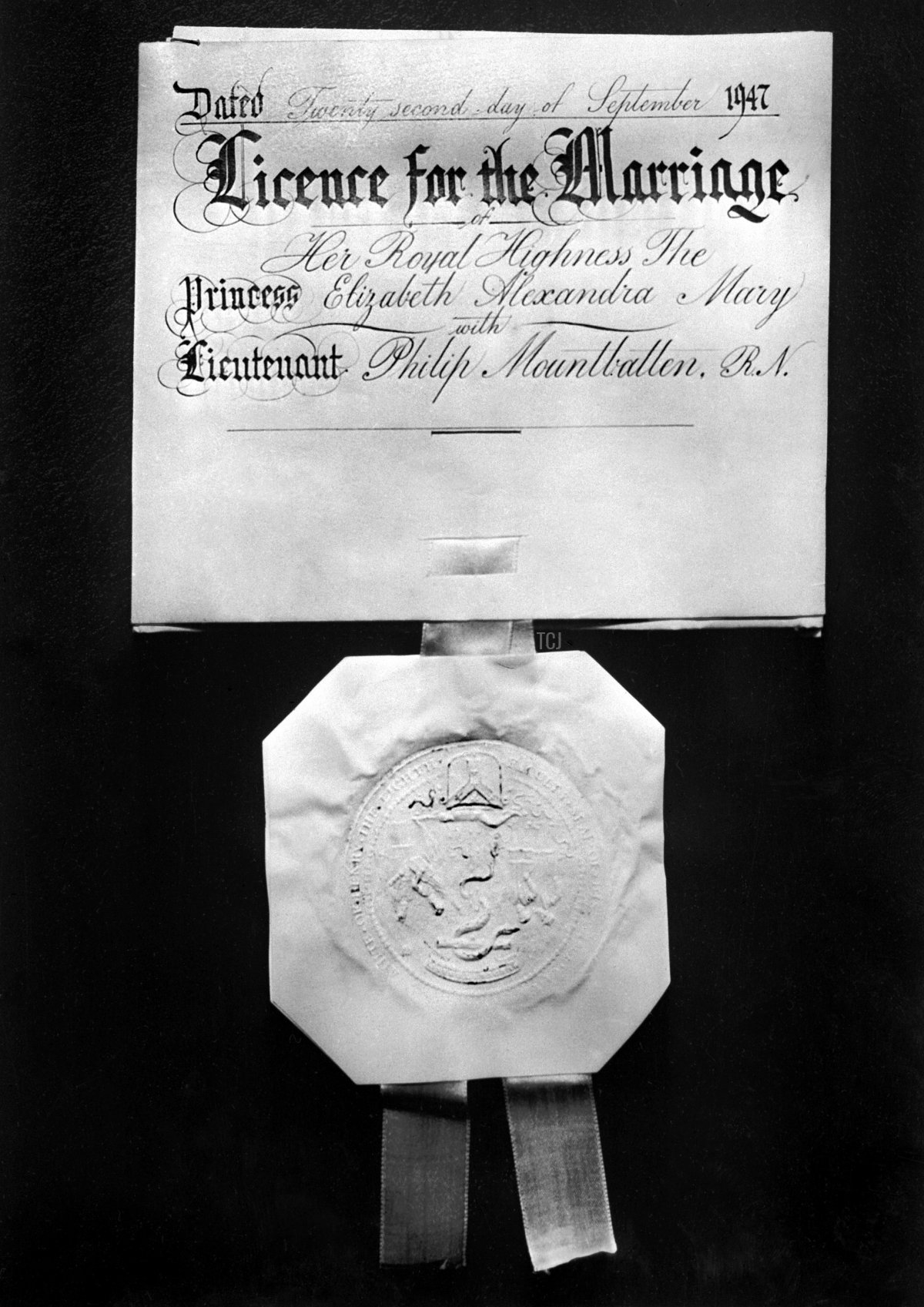
Elizabeth’s father, King George VI, gave his official consent for the couple’s marriage, and the license for the wedding was granted in September 1947 by the Archbishop of Canterbury, Geoffrey Fisher.
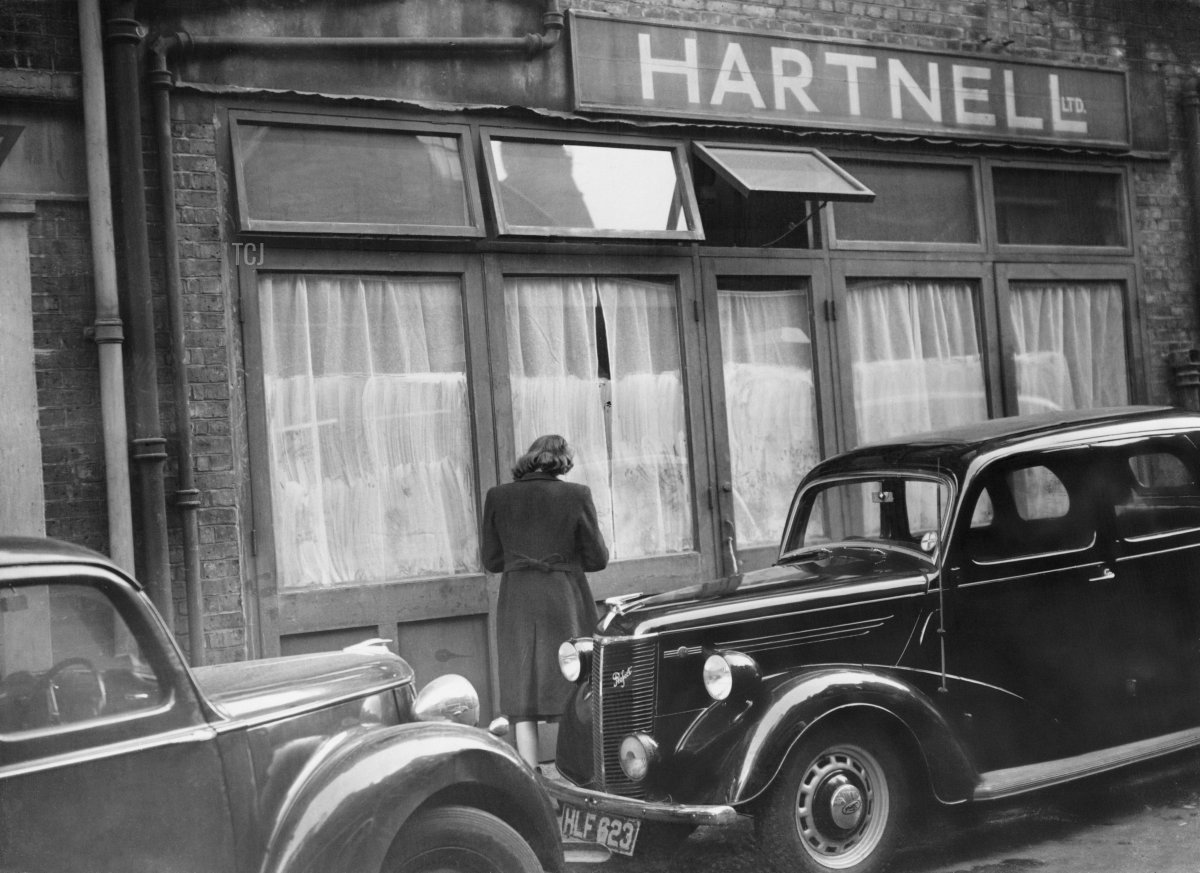
Meanwhile, the Queen’s favorite couturier, Norman Hartnell, was hard at work on designs for Princess Elizabeth’s wedding dress. The windows of his London studio, pictured in October 1947, were whitewashed to prevent curious eyes from discovering the details of the dress’s design before the big day.
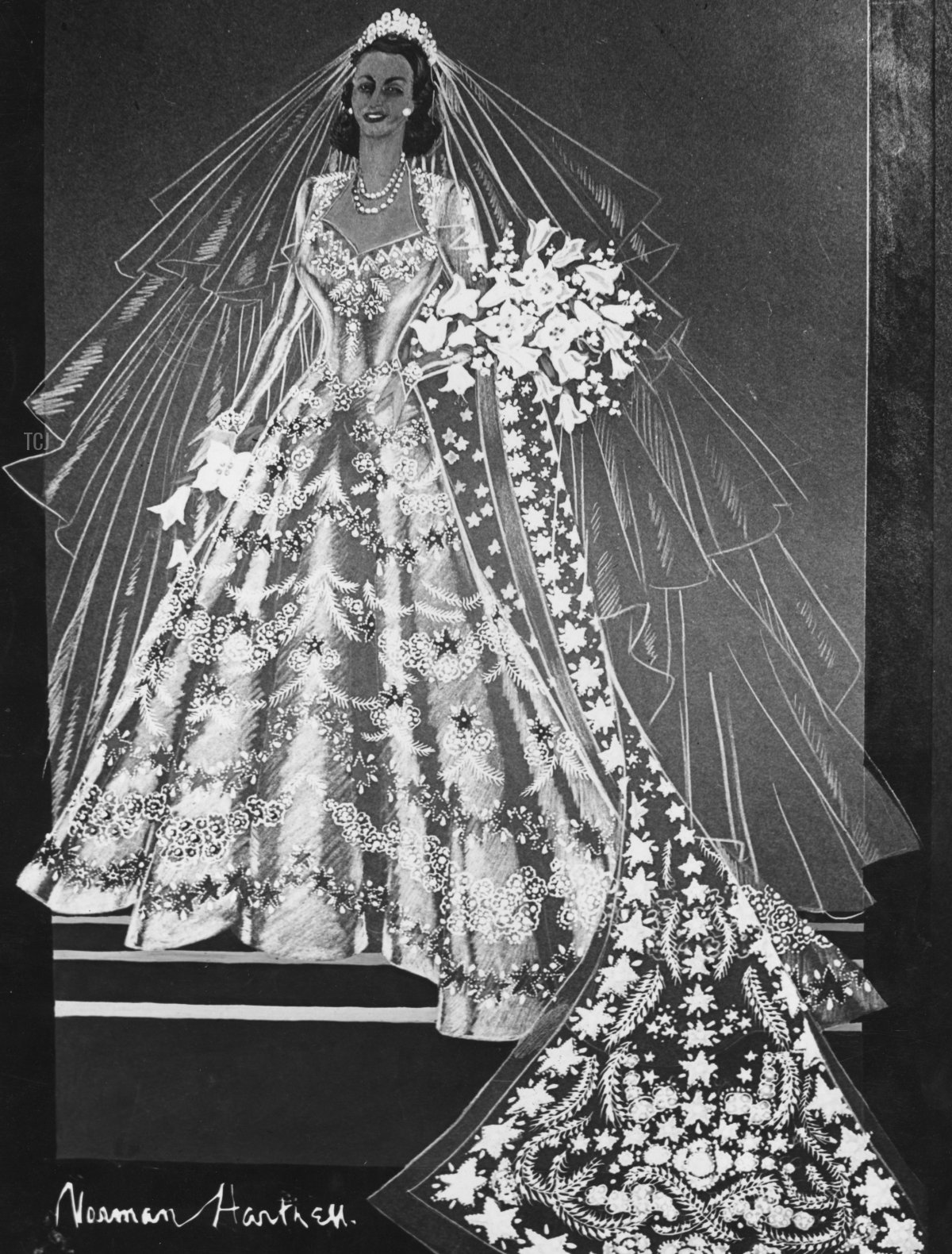
Here’s a look at some of the sketches that Hartnell produced for the occasion. The wedding gown he created for the royal bride was made of duchesse satin, heavily embroidered with floral designs, including orange blossoms and star lilies. Thousands of pearls were sewn on to the gown, and extra ration cards were provided so that the bride could have a wedding gown fit for a princess.
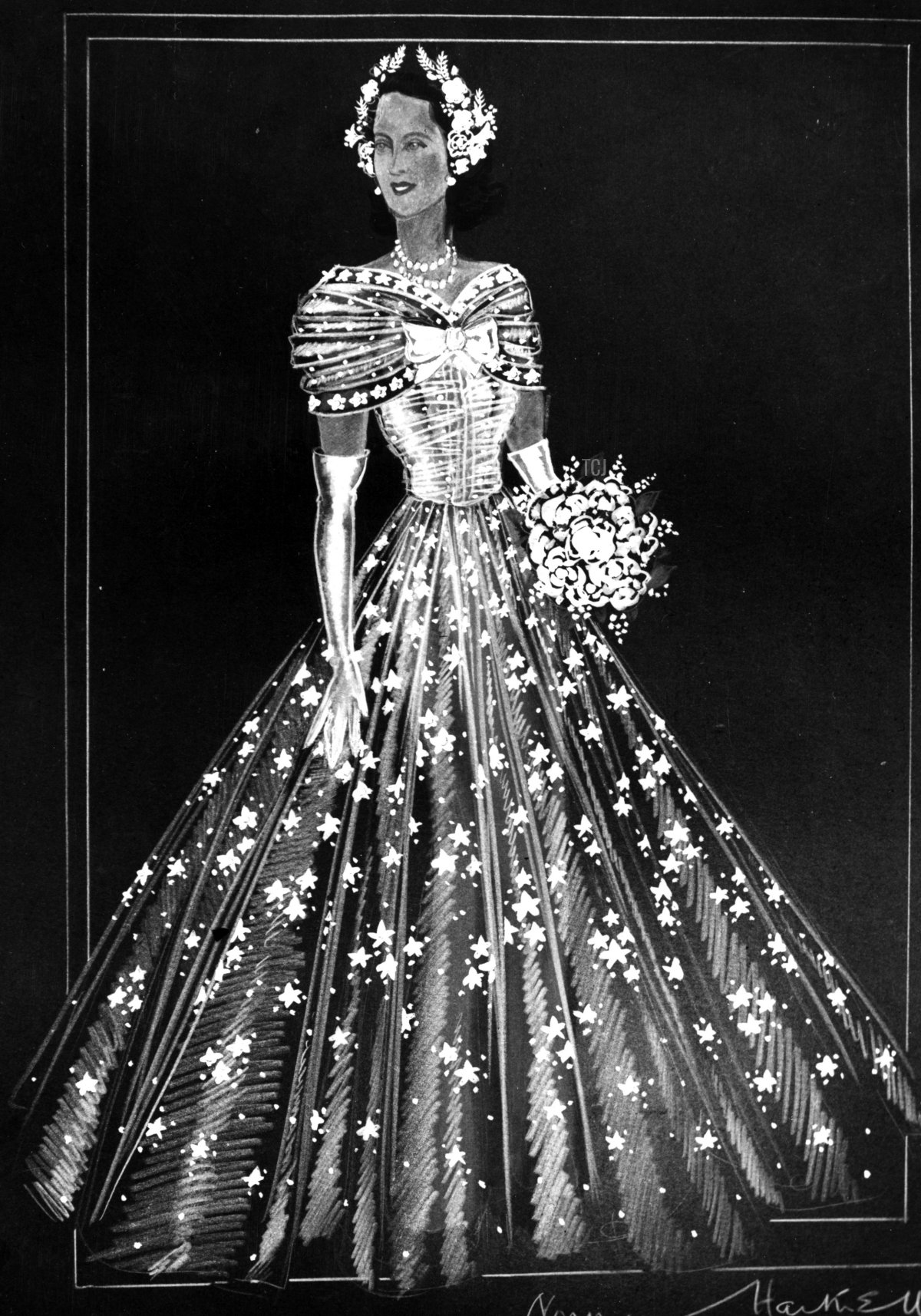
Elizabeth had eight bridesmaids: her sister, Princess Margaret; her cousins, Princess Alexandra of Kent, Margaret Elphinstone, Diana Bowes-Lyon, and Lady Mary Cambridge; Philip’s cousin, Lady Pamela Mountbatten; and two more contemporary aristocrats, Lady Caroline Montagu-Douglas-Scott (daughter of the Duke of Buccleuch) and Lady Elizabeth Lambart (daughter of the Earl of Cavan). Hartnell also designed elaborate dresses for each bridesmaid, inspired by royal paintings by Winterhalter and Tuxen.
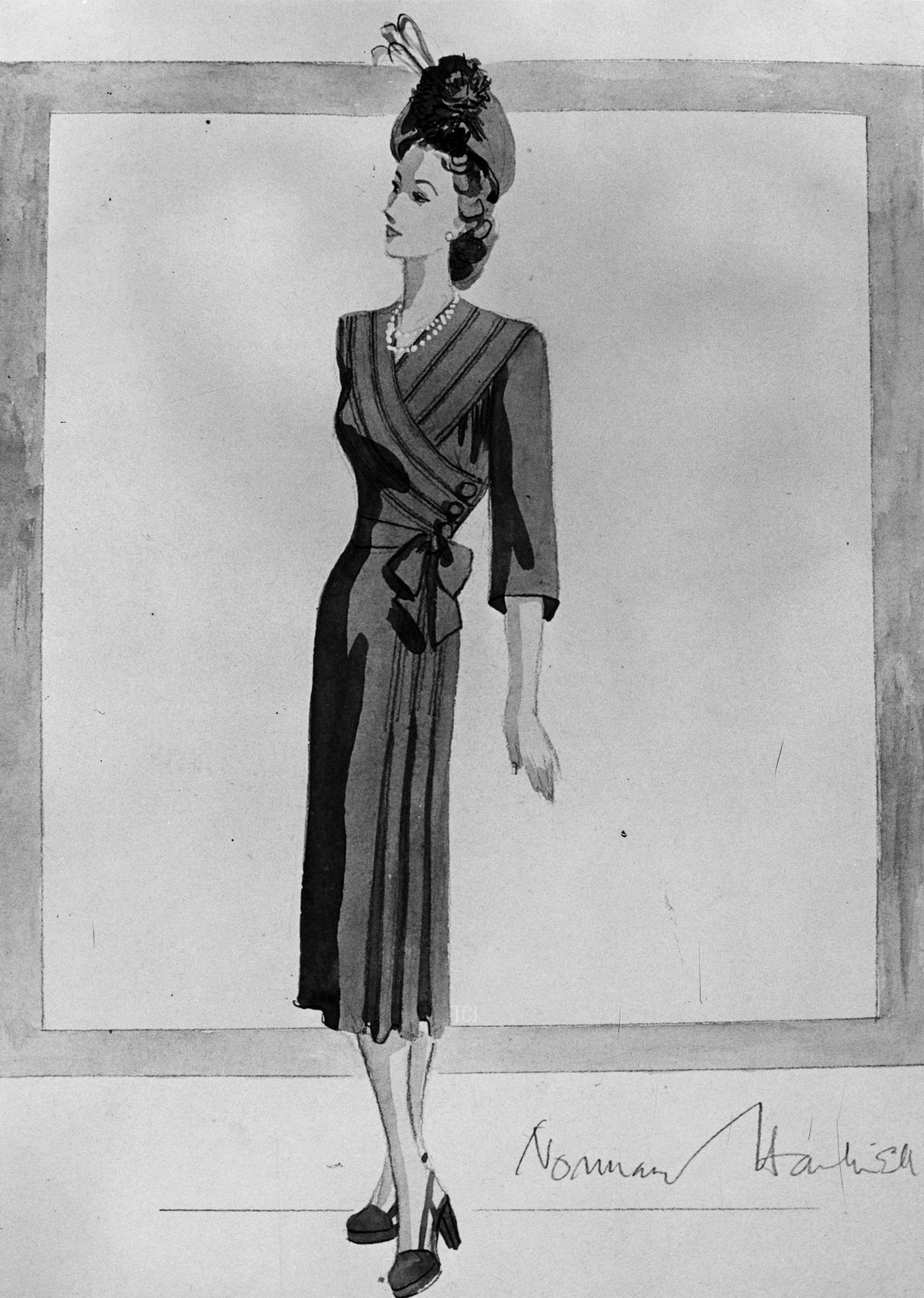
The outfits created by Hartnell for Princess Elizabeth’s wedding also included a going-away ensemble, featuring a crepe dress and matching velour coat in a shade dubbed “love-in-the-mist blue.”
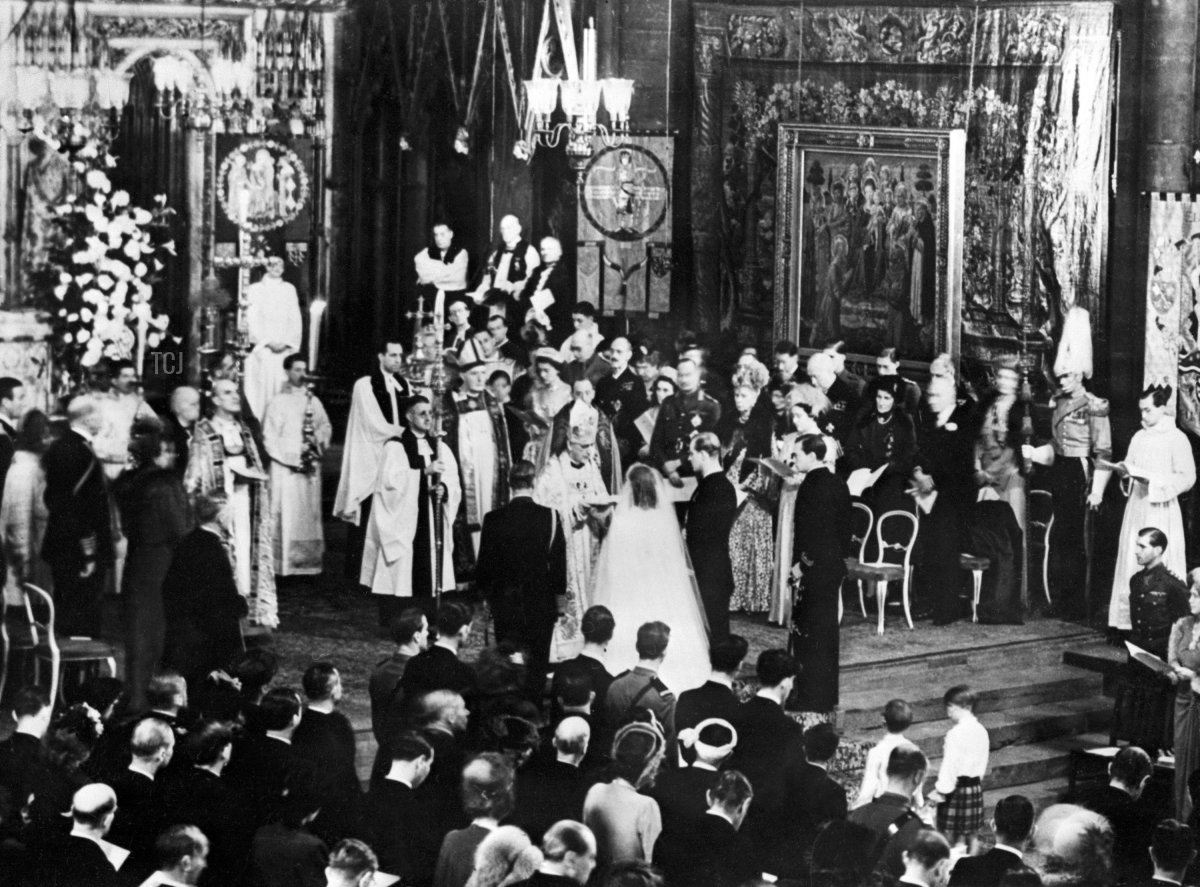
The wedding took place on the morning of Thursday, November 20, 1947. Before the wedding, King George VI gave Philip a new set of titles: Duke of Edinburgh, Earl of Merioneth, Baron Greenwich. The morning was gray as the new Duke arrived at the Abbey, but the scene inside was splendid. Princess Elizabeth was escorted down the aisle by her father, and the couple were married by Archbishop Fisher. Philip slipped a wedding ring made of Welsh gold on to his bride’s finger during the ceremony, which was witnessed by royal members of both families.
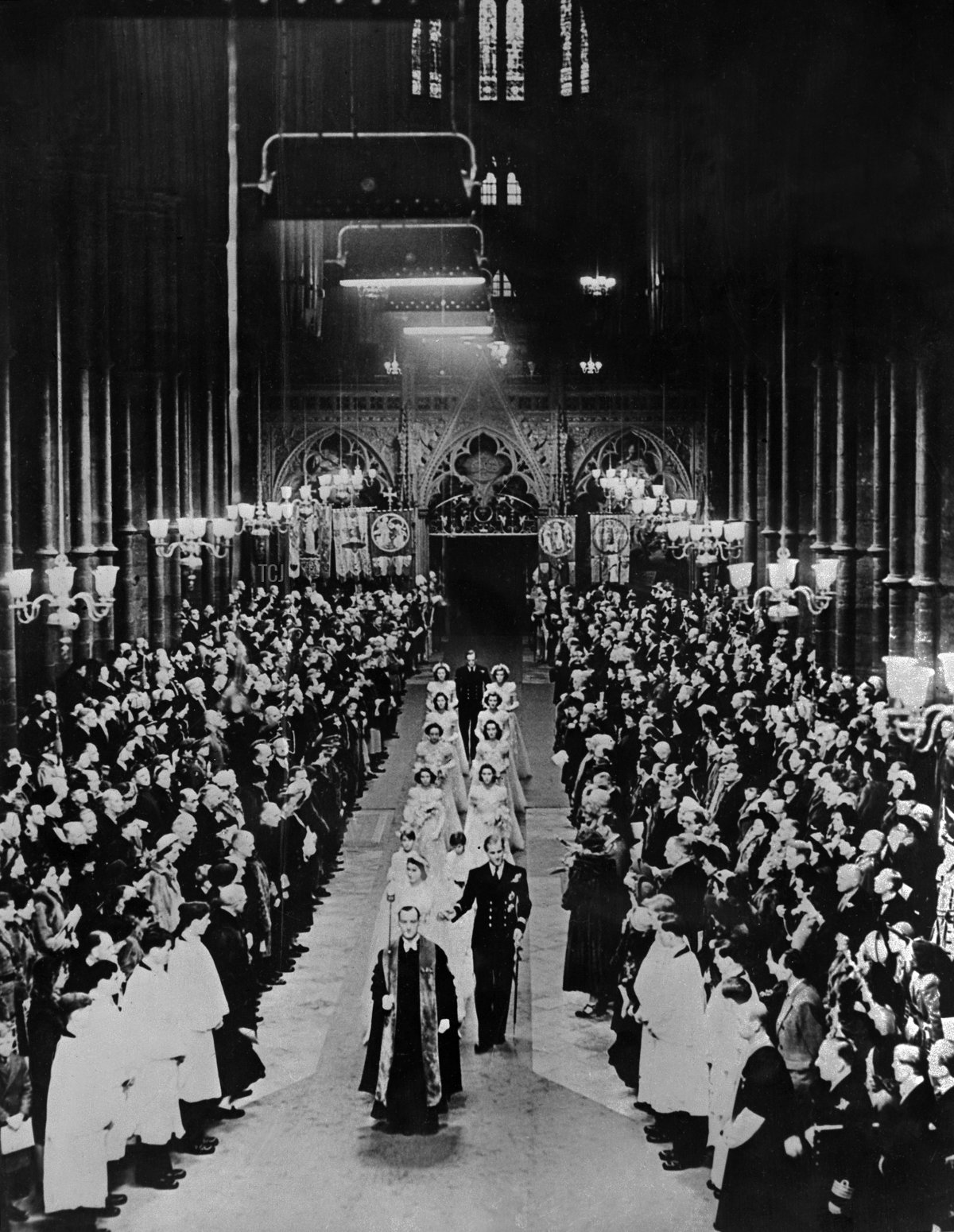
After the marriage was solemnized, the couple processed down the aisle of the Abbey with their bridal party. The group also included Philip’s best man, the Marquess of Milford Haven, and two page boys, Prince William of Gloucester and Prince Michael of Kent.
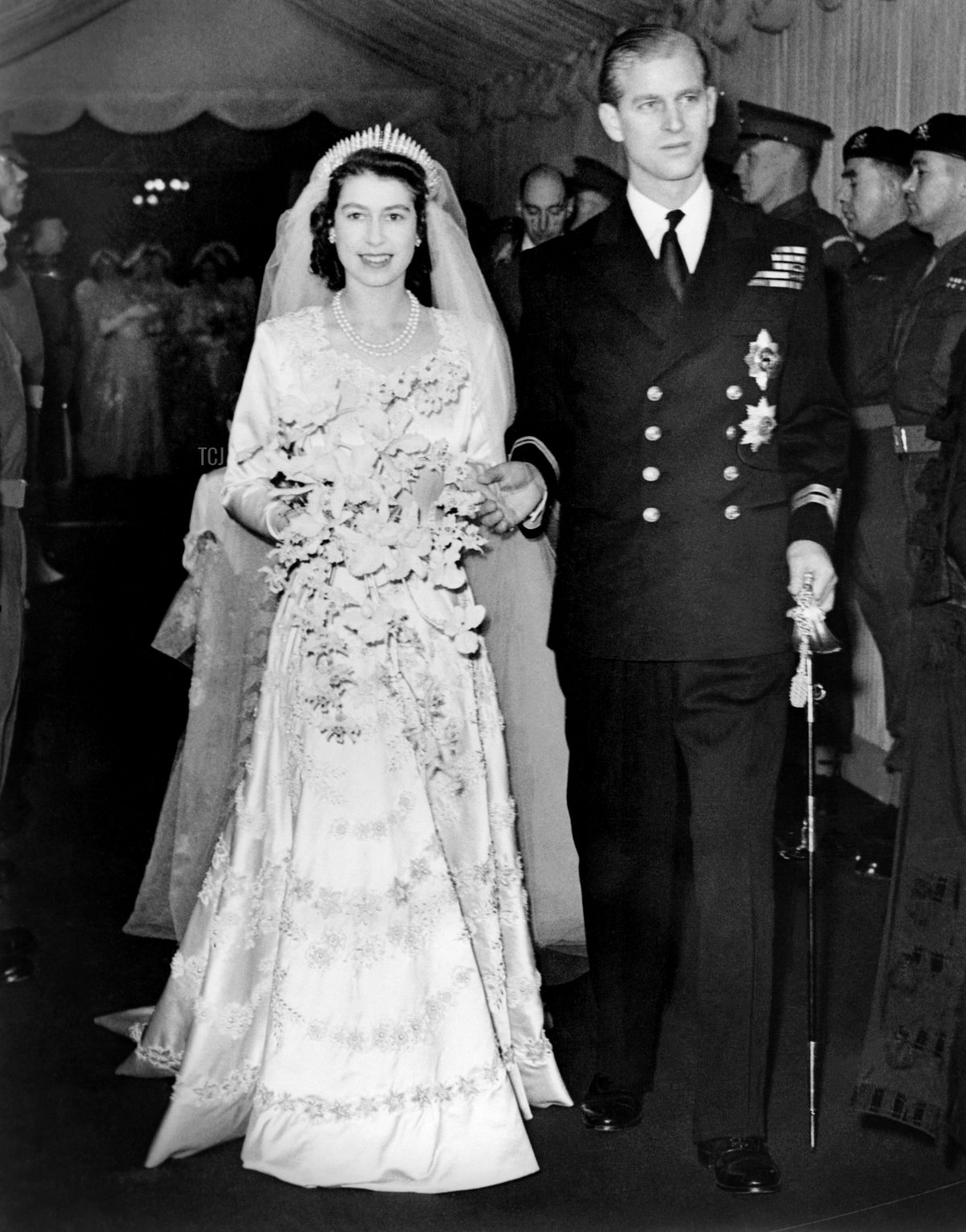
The couple looked radiant in their wedding attire as they departed for the wedding breakfast at Buckingham Palace.
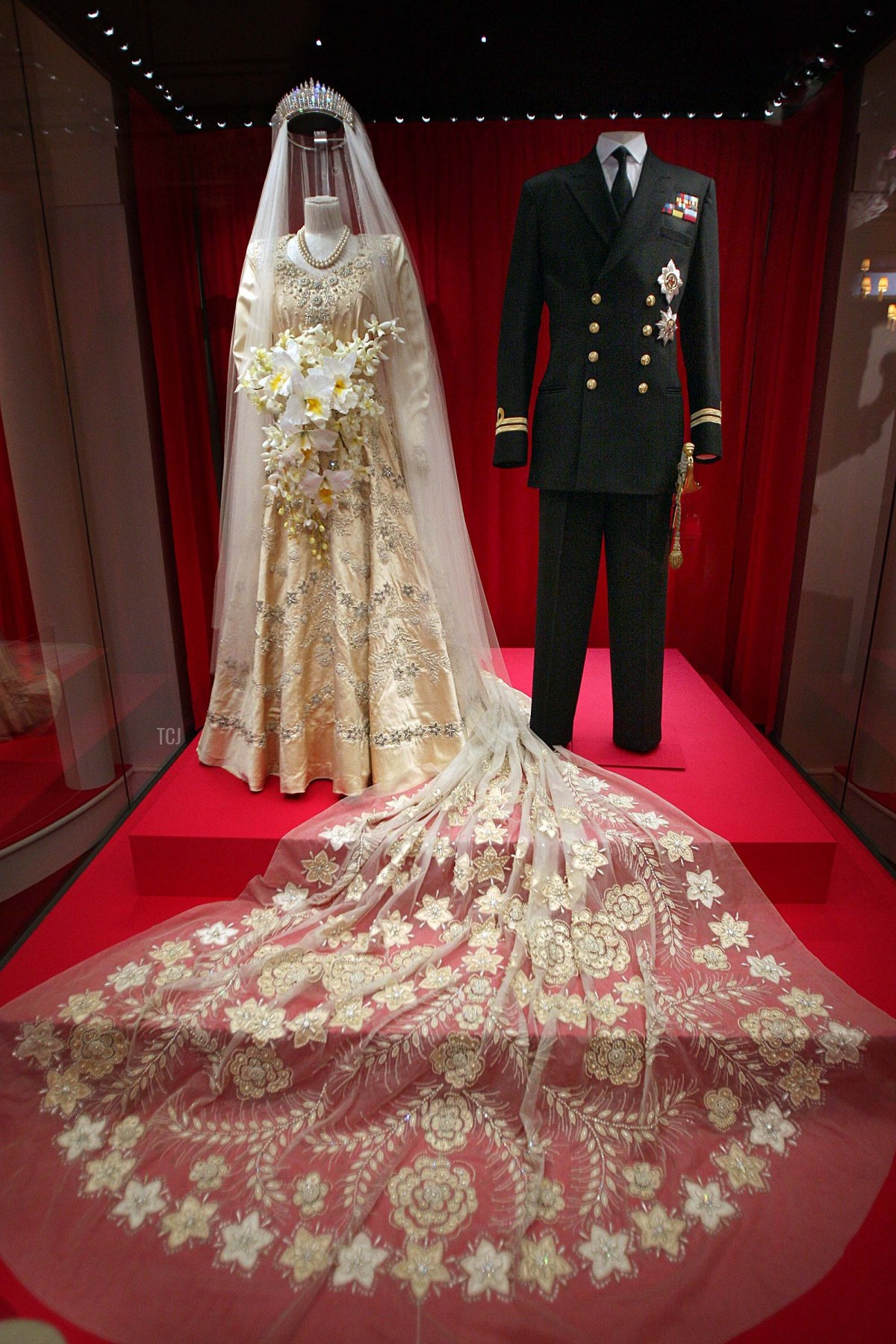
Here’s a look at the couple’s wedding clothes, displayed 60 years later in an exhibition celebrating their Diamond Wedding Anniversary in 2007.
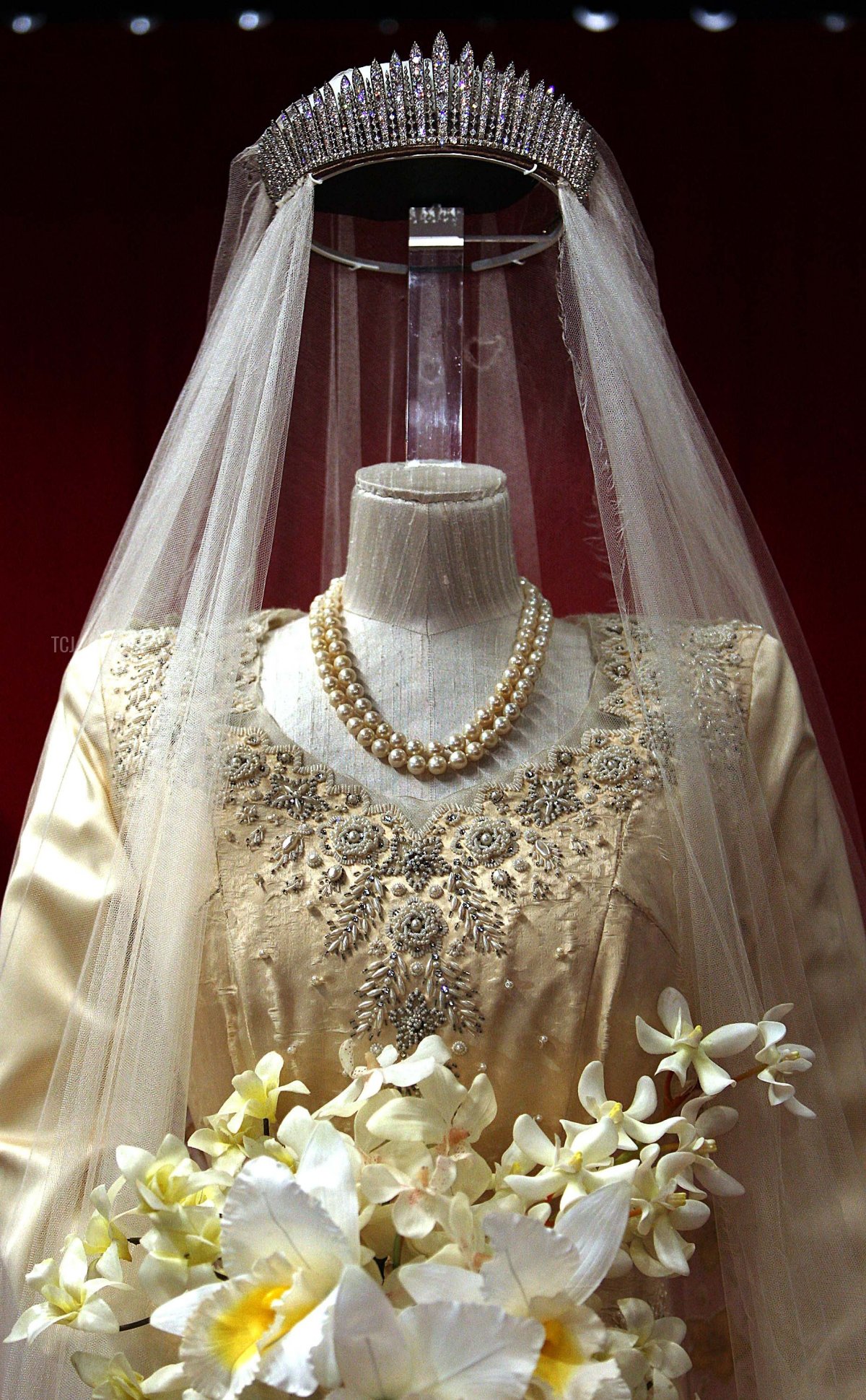
The bride’s jewels were displayed as well. Elizabeth borrowed Queen Mary’s Fringe Tiara from her mother. The diamond fringe was made in 1919 using diamonds taken from Mary’s own wedding tiara, the Collingwood Fringe. The tiara was used often by Queen Elizabeth (the Queen Mother) both before and after this royal wedding. Famously, though, as the tiara was placed on Princess Elizabeth’s head on the wedding day, the frame snapped and had to be hastily repaired before the ceremony. Later, the Queen Mother also loaned the tiara to Princess Anne for her wedding in 1973, and in 2020, Queen Elizabeth II loaned the jewel to her granddaughter, Princess Beatrice, to wear on her wedding day as well.
Princess Elizabeth also wore pearls with her bridal ensemble. She selected a pair of pearl and diamond earrings, given to her by Queen Mary in January 1947, with a long royal history. They had originally belonged to Princess Mary, Duchess of Gloucester and Edinburgh, one of the daughters of King George III, and had been passed down through the Teck family.
Her necklaces also had impressive royal provenance. The Queen Anne and Queen Caroline Pearl Necklaces were wedding gifts from Elizabeth’s father. One is said to have belonged to Queen Anne, the last Stuart monarch; the other is said to have been worn by Caroline of Ansbach, wife of King George II. The necklaces were on display at St. James’s Palace on the wedding day and had to be quickly retrieved by the princess’s private secretary, Jock Colville, so she could wear them for the ceremony.
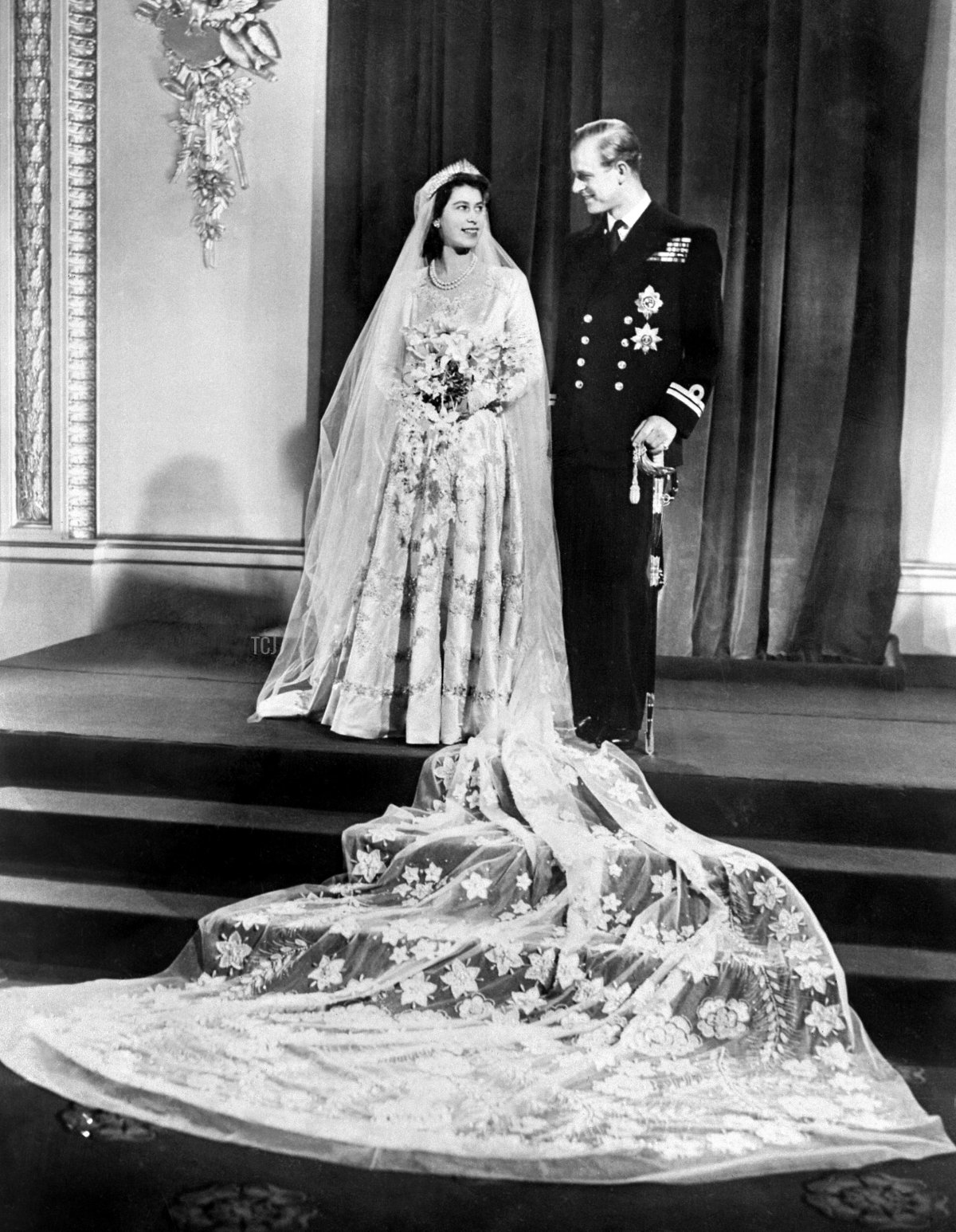
At the palace after the ceremony, the couple posed for formal wedding portraits.
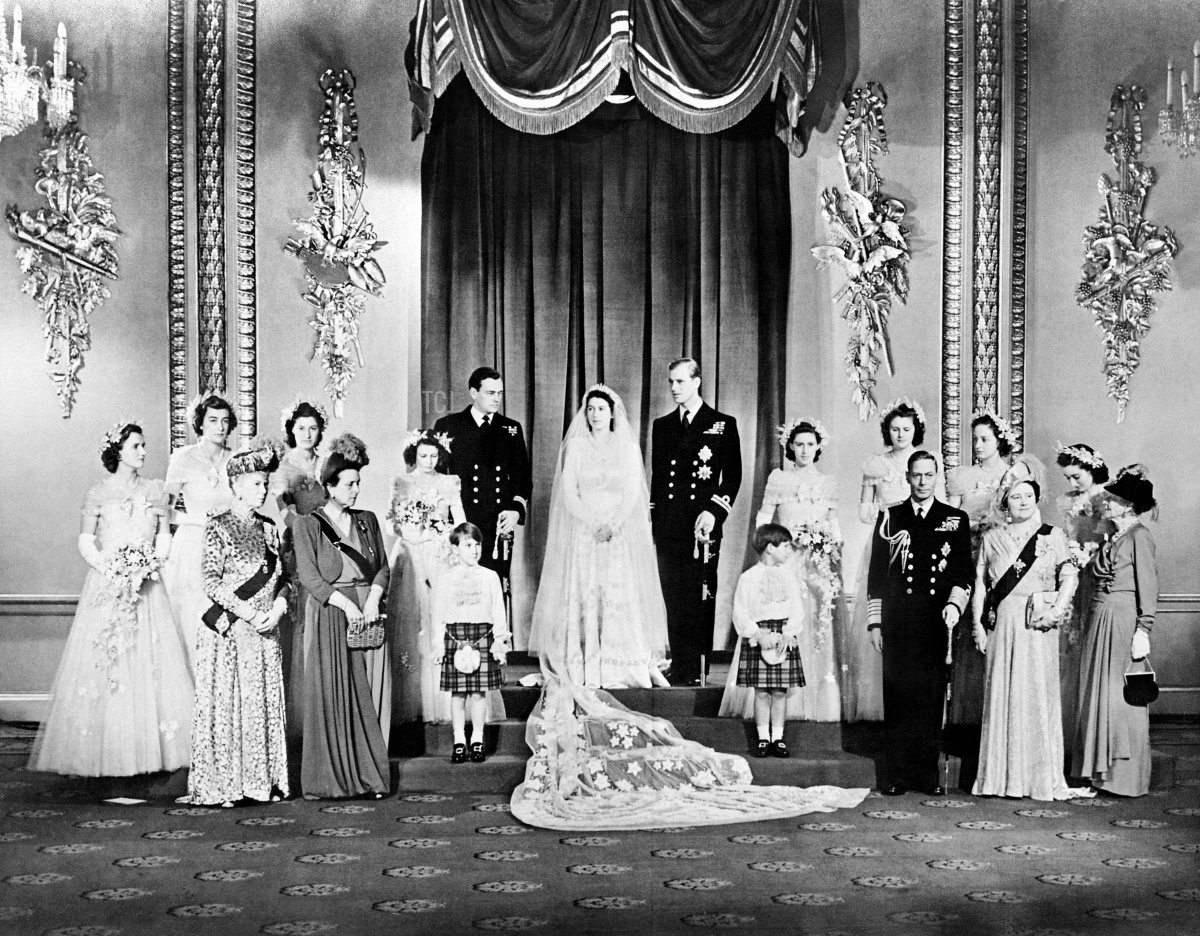
They were joined by members of their family and the bridal party for this image. The bride’s family—King George VI, Queen Elizabeth, Princess Margaret, and Queen Mary—are pictured here, as are members of the groom’s family, Princess Andrew of Greece and Denmark and the Dowager Marchioness of Milford Haven.
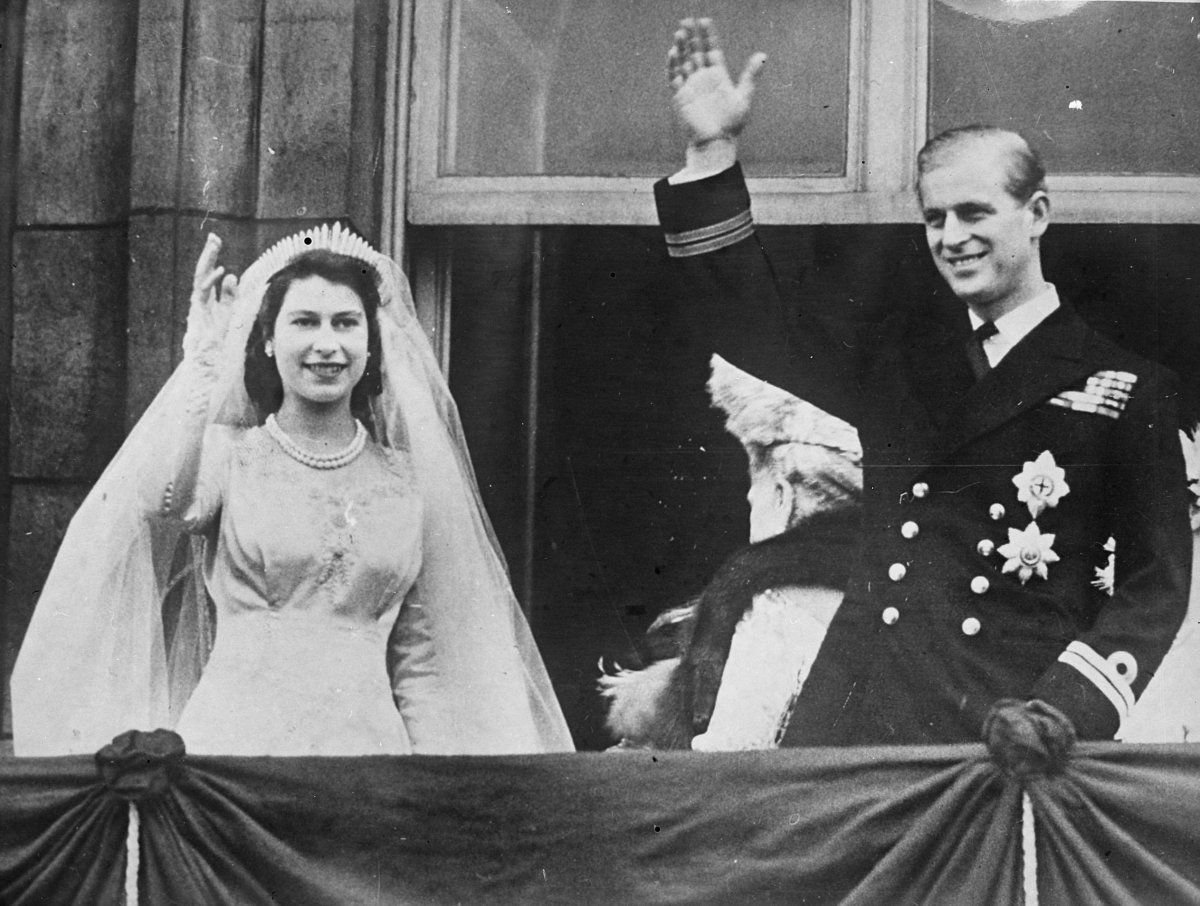
The couple made several appearances on the balcony of Buckingham Palace, cheered on by the enormous crowd that had gathered below on the Mall.
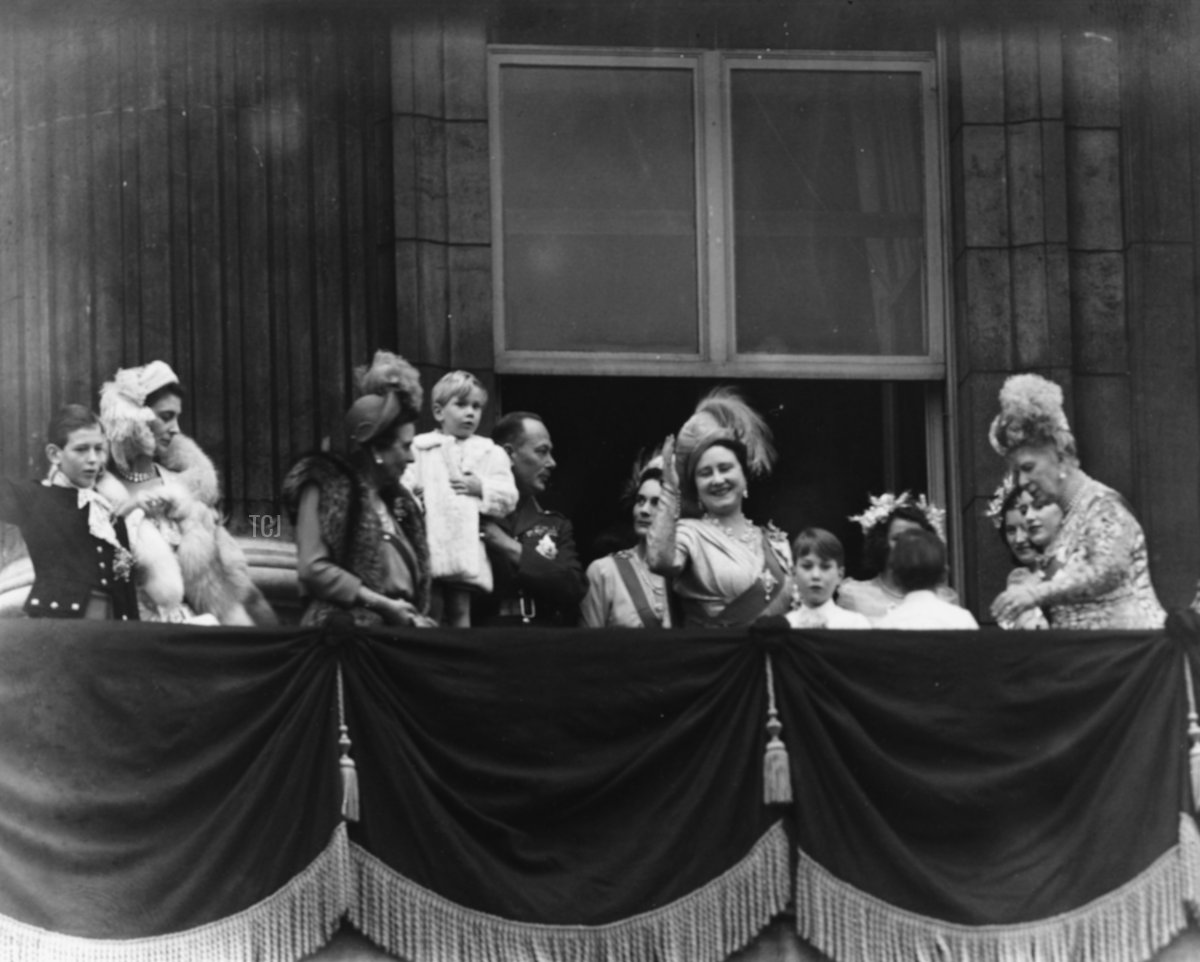
Other members of the family joined them on the balcony, too, including the Kents, the Gloucesters, Princess Andrew, Queen Elizabeth, and Queen Mary.
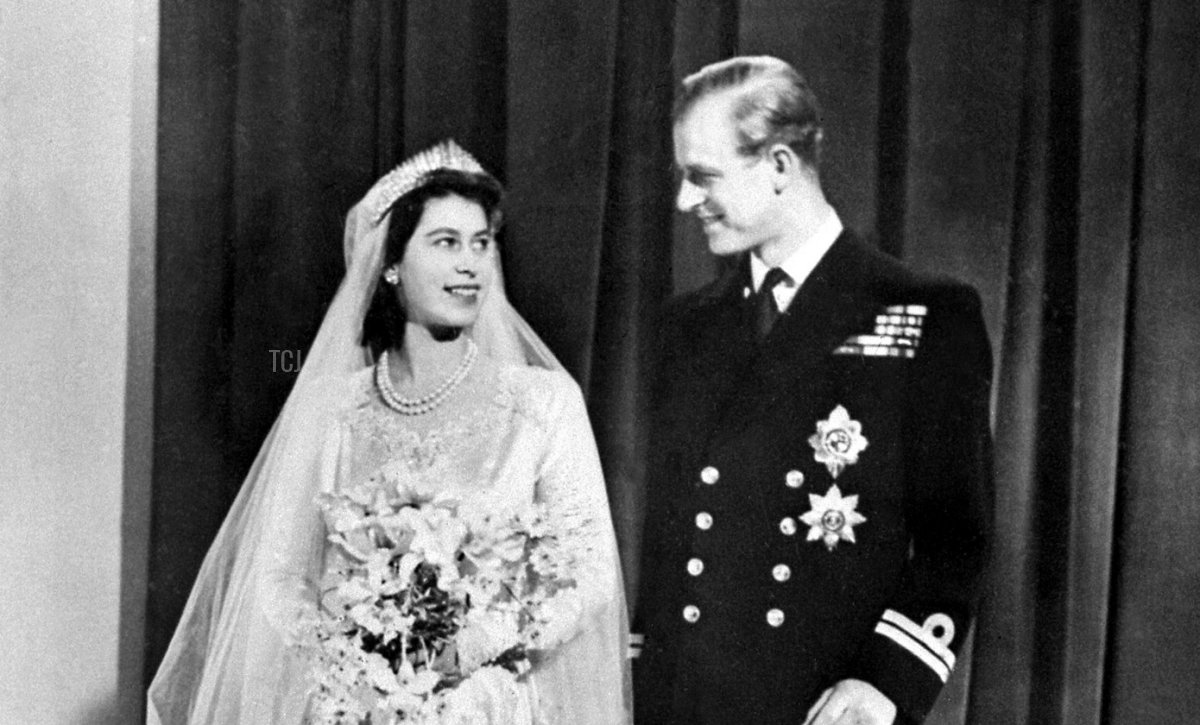
This year would have marked the couple’s 75th wedding anniversary. They came close: in November 2020, shortly before Prince Philip’s death at the age of 99, they celebrated a remarkable 73 years of marriage together. Theirs remains one of the most enduring royal marriages in British history.
Leave a Reply
You must be logged in to post a comment.